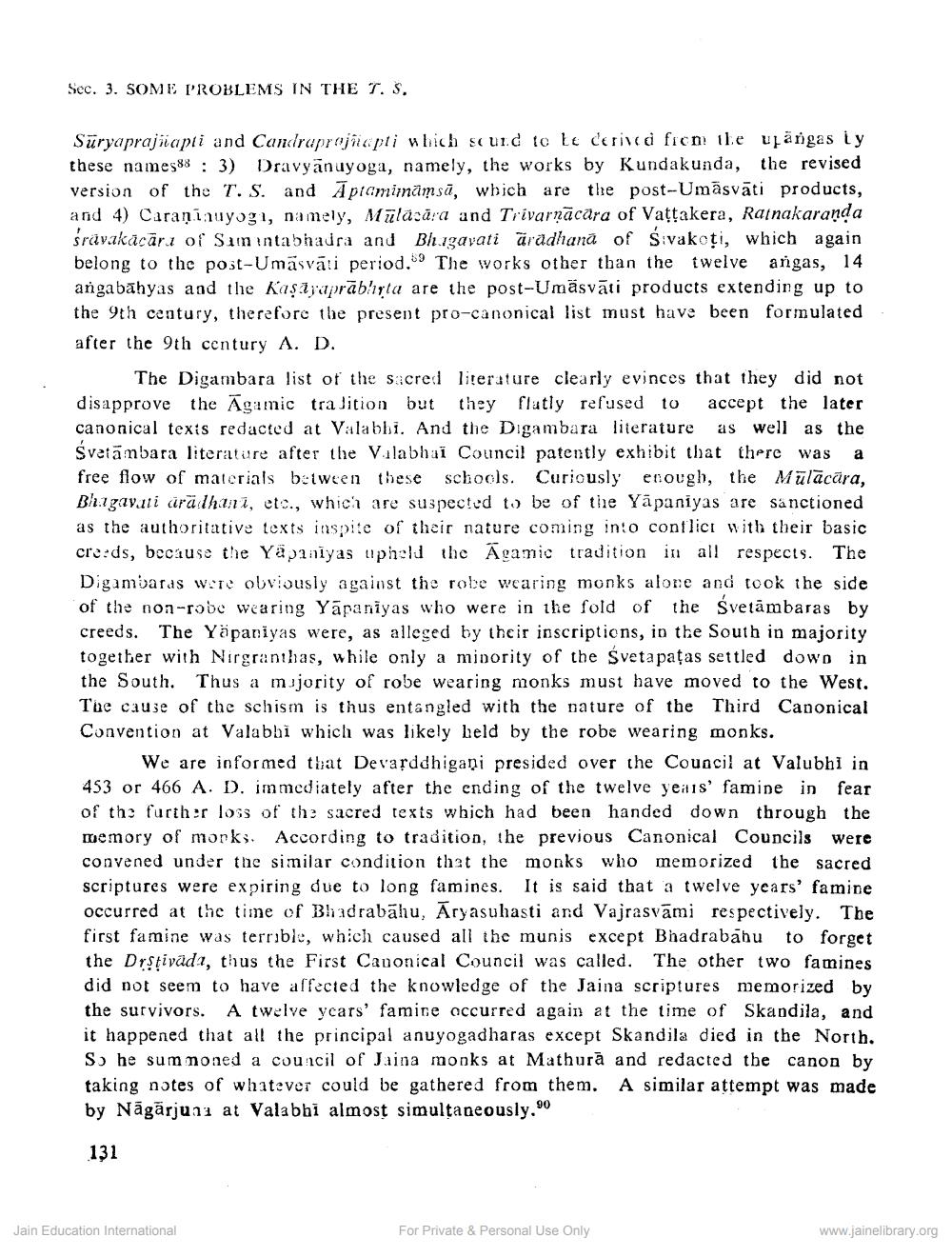________________
Sec. 3. SOME PROBLEMS IN THE 7. S.
Süryaprajiapil and Candraprojapti which scund to be derived from the ujingas Ly these names: 3) Dravyänuyoga, namely, the works by Kundakunda, the revised version of the T. S. and Aptamimamsā, which are the post-Umasvati products, and 4) Caranianyogi, namely, Malacara and Trivarṇacara of Vattakera, Rainakaranda śrävakācāra of Samantabhadra and Bhagavati aradhana of Śivakoti, which again belong to the post-Umäsväti period. The works other than the twelve angas, 14. angabahyas and the Kaşayaprabyla are the post-Umäsvāti products extending up to the 9th century, therefore the present pro-canonical list must have been formulated after the 9th century A. D.
The Digambara list of the sacred literature clearly evinces that they did not disapprove the Agamic tradition but they flatly refused to accept the later canonical texts redacted at Valabhi. And the Digambara literature as well as the Svetambara literature after the Valabhai Council patently exhibit that there was a free flow of materials between these schools. Curiously enough, the Mūlācāra, Bhagavati aradhan, etc., which are suspected to be of the Yapaniyas are sanctioned as the authoritative texts inspite of their nature coming into conflict with their basic creeds, because the Yapaniyas upheld the Agamie tradition in all respects. The Digambaras were obviously against the robe wearing monks alone and took the side. of the non-robe wearing Yapaniyas who were in the fold of the Svetambaras by creeds. The Yapanlyas were, as alleged by their inscriptions, in the South in majority together with Nirgranthas, while only a minority of the Svetapatas settled down in the South. Thus a majority of robe wearing monks must have moved to the West. The cause of the schism is thus entangled with the nature of the Third Canonical Convention at Valabhi which was likely held by the robe wearing monks.
We are informed that Devarddhigapi presided over the Council at Valubhi in 453 or 466 A. D. immediately after the ending of the twelve years' famine in fear of the further loss of the sacred texts which had been handed down through the memory of morks. According to tradition, the previous Canonical Councils were convened under the similar condition that the monks who memorized the sacred scriptures were expiring due to long famines. It is said that a twelve years' famine occurred at the time of Bhadrabahu, Aryasuhasti and Vajrasvami respectively. The first famine was terrible, which caused all the munis except Bhadrabahu to forget the Drṣṭivada, thus the First Canonical Council was called. The other two famines did not seem to have affected the knowledge of the Jaina scriptures memorized by the survivors. A twelve years' famine occurred again at the time of Skandila, and it happened that all the principal anuyogadharas except Skandila died in the North. So he summoned a council of Jaina monks at Mathura and redacted the canon by taking notes of whatever could be gathered from them. A similar attempt was made by Nagarjun at Valabhi almost simultaneously,90
131
Jain Education International
For Private & Personal Use Only
www.jainelibrary.org




